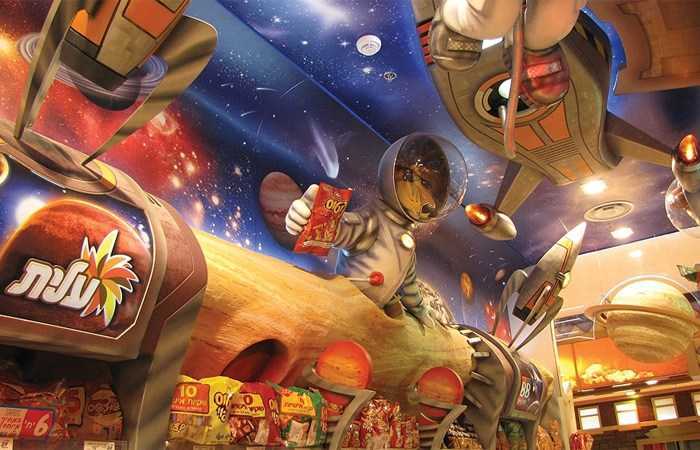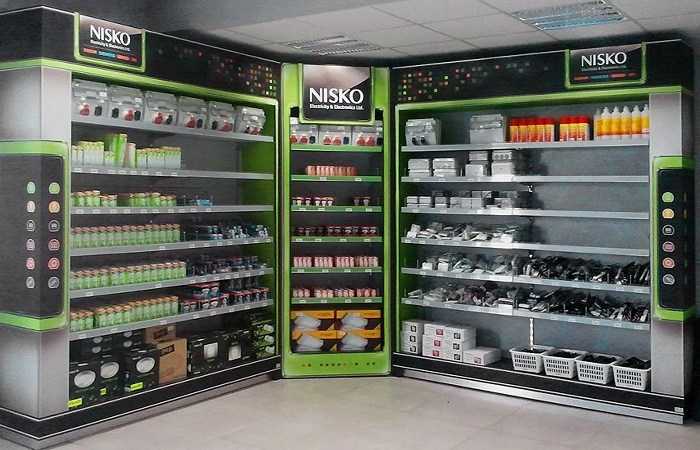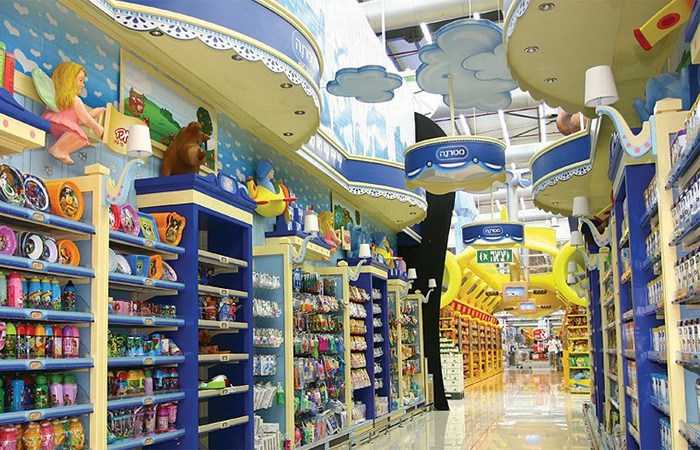Stores and chains face a dilemma whether or not to promote particular brands and how to do so while safeguarding their own visibility.

Integrating brand visibility into a store has several distinct advantages: preferential business terms, partial financial assistance for installations, the contribution of the supplier’s knowledge and understanding of the category, establishing and strengthening the relationship with the brand and, where necessary, strengthening of the category in the eyes of the consumer.
But only seeing the benefits of brands and giving these companies a free hand in-store frequently damages retailers when the brands take over the points of purchase and the retailer’s identity becomes a jumble of brand fixtures without considering the implications for the entire retail space. This is mainly due to the retailer’s difficulty in knowing how to maximize the use of brands and by inadequately managing the planning and design process.
 A display of Nisko-branded electrical products in a Yashir Group electricity products and tools store.
A display of Nisko-branded electrical products in a Yashir Group electricity products and tools store.When designing a store or chain that is not itself branded, the advantages provided by cooperation between companies should be integral in the store’s planning and design. Appropriate collaboration can achieve impressive results for both parties in just about every area: food, pharmacy, DIY, sports, etc.
Today more than ever, companies and retailers are on an equal footing at the point of purchase. The consumer doesn’t usually perceive the branded product as being more important than the store itself, as long as the product is displayed professionally and reliably.
Maintaining the store’s reliable and professional appearance while integrating leading brands in various categories can be profitable and beneficial to both parties and contribute to the customer’s shopping experience. The first stage is to plan and design the store while taking into account the space’s operational and retail needs, including clear brand values. The second stage combines the different brands into a predetermined structure and design.
In general, I am against adding permanent stands, which more often than not seem out of place, take up space and show a lack of foresight. Permanent branding can be implemented in two ways. In the first, graphical space on fixtures is rented for set time-periods, where the cost per meter/foot is set ahead of time. In the second, the brand is truly integrated by accounting for the needs at the specific point of purchase with appropriate structural planning and optimization for the store, while referencing its implications for the customer’s path, the planogram and the impact on the rest of the display.
The range of solutions depends on the space and location, from designated shelving systems to a fixture dedicated to a brand, and from stages and non-shelf displays to a “store within a store.”
 Baby products category in a Hazi Hinam supermarket, designed with Materna (a baby formula company) brand values.
Baby products category in a Hazi Hinam supermarket, designed with Materna (a baby formula company) brand values.In cases where a brand itself initiates the process of adding a fixture to increase sales, a modular display system must be designed to allow easy adjustments at different stores, while meeting the on-site operational needs and, at times, even provide flexibility on the brand’s core values, such as color and planograms.
Whether the initiator is the retailer or the brand, the only way to create long-term and productive cooperative relationships is to properly manage the planning and design processes and the implementation, while addressing the needs of both parties.
The appropriate presentation of a brand at points of purchase requires professional and marketing experience. Beyond customizing the products themselves and knowing how to best display them, the brand values can be used in the concepts and design, e.g. in the shape and color of the fixture in a way that will stand out, be recognizable and communicate with the customer from afar. The correct integration of interior design, industrial design, planning and graphic design will achieve impressive results and increase the brand and chain’s sales significantly.